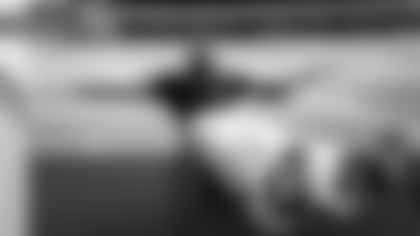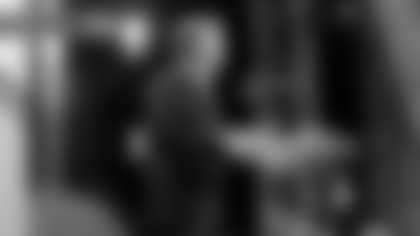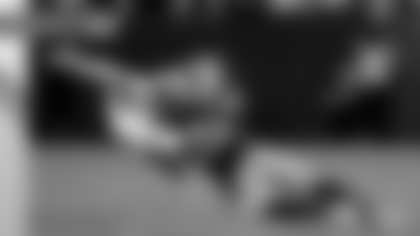The timing was perfect.
Completed in 2003, Lambeau Field's redevelopment couldn't have fallen any better in the timeline of NFL stadium construction.
It came at the tail end of a nearly decade-long stadium boom in the NFL, making it one of the league's top venues upon being finished. With only four new stadiums built since then, Lambeau remains on a lofty perch.
"I still put it at the top of the list, I really do," former Packers President/CEO Bob Harlan told packers.com in an interview that revisited some elements of the project.
"I think it's the best place in the NFL, without a doubt, to see a football game. We were able to make it modern but at the same time what was very important to me was to keep it retro."
That was Harlan's priority from the start, preserving the history and tradition of the place where legendary head coach Vince Lombardi's teams played and practiced.
After extensive testing proved the stadium bowl itself would remain sound for decades to come – for which Harlan credited director of facility operations Ted Eisenreich, his staff and their meticulous annual maintenance policy – the redevelopment was able to accomplish Harlan's goals.
"I have a great admiration for college football stadiums, those old brick stadiums that to me represent tradition," Harlan said. "That's something we've got in Green Bay. It's the closest thing in the NFL to a college atmosphere."
The trick was being able to preserve that while adding the amenities necessary to keep pace with increasing revenue streams in the league.
Harlan recalled that after the Packers went to consecutive Super Bowls following the 1996-97, the team ranked in the top 10 in the league in overall revenue. In the few years that followed, however, the Packers dropped into the league's bottom third.
The reason? From 1997-2002, spanning Green Bay's Super Bowl XXXI title through the year prior to the completion of the new Lambeau, 12 NFL teams built new stadiums. Throw in the two teams (Chicago and Philadelphia) plus the Packers who opened new or redeveloped stadiums in 2003, and that's almost half the league in less than a decade.
Harlan believes the genesis of the stadium boom was the construction of Camden Yards for baseball's Baltimore Orioles in 1992.
"It just took off," Harlan said. "Teams found out you could build these older-looking stadiums with private boxes, club seats, restaurants and stores and greatly increase your local revenue.
"We had to keep up with the rest of the league and it worked, because it put us back up in that top echelon and we're still in great position."
The Packers remain there in part because the NFL's changing economics led to only four new stadiums (Arizona in 2006, Indianapolis in 2008, Dallas in 2009 and New York/New Jersey in 2010) being opened since.
Moreover, Harlan has since been told the cost of the $295-million Lambeau project would have risen to around $750 million, an increase of 250 percent, if the Packers had waited and been in need of the same redevelopment now. That price tag would have made it prohibitive to ask for taxpayer support.
Another piece of fortuitous timing was also attached to that stage of the process, long before a single brick was laid for the new Lambeau: The Packers needed permission from the Wisconsin state legislature to put a referendum for the half-cent Brown County sales tax on the ballot. The legislature had recently finished an ugly battle to pass a sales tax (without a referendum) to support the Milwaukee Brewers' new stadium and wanted the Packers to wait another year.
Harlan stressed that the team couldn't wait and he got the referendum on the ballot in Sept., 2000. Had the Packers waited a year, the referendum would have been held on Sept. 11, 2001.
"I asked (former treasurer) Larry Weyers where would we be if we didn't have this stadium today," Harlan said. "He said we would be either 31st or 32nd in the league in revenue, with no future."
Plans are always being made to keep Lambeau among the league's best in the future, too. Enlarged, higher resolution video boards with a new sound system are being installed in the stadium this year, while additional seating and/or a standing-room-only section has been discussed for the south end zone as a potential next stage.
Forward-thinking projects, spearheaded by the current administration under President/CEO Mark Murphy, combined with the annual maintenance of the stadium, keep Harlan confident Lambeau will remain a top venue for quite some time, and he cites his affinity for classic college stadiums, again, as proof.
"I went to Iowa City this year, Kinnick Stadium, which was built in 1929," Harlan said. "They've added to it, but you would think the whole thing was built in 1929. All the bricks match. They did a fabulous job.
"I said to myself, 'If they can still have their great stadium, and ours was built in 1957, there's no reason we can't continue to have this great stadium.' I'm very optimistic."
Mike Spofford is a 1995 Masters graduate of the Medill School of Journalism at Northwestern University who worked as a sports reporter for two daily newspapers in Wisconsin, covering the Packers in Super Bowl XXXII. Spofford has been a packers.com staff writer since 2006.















